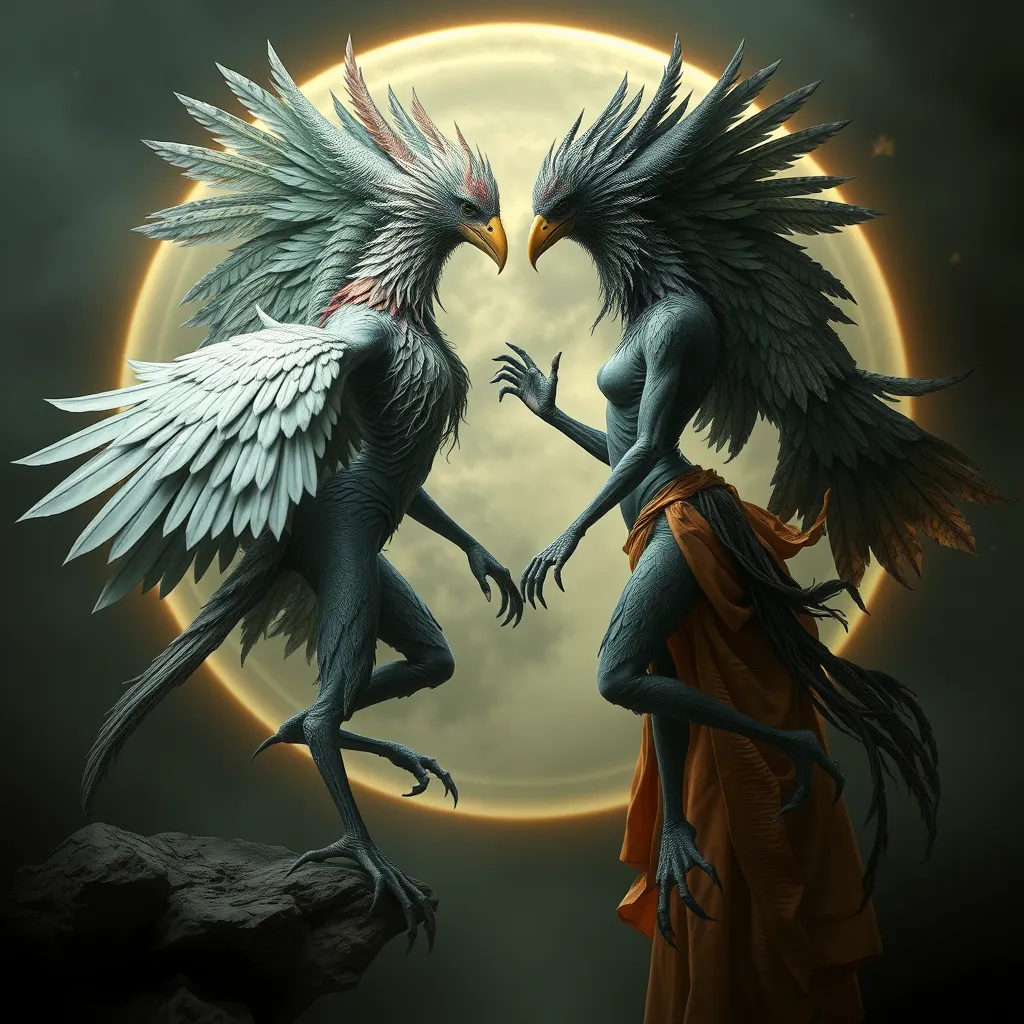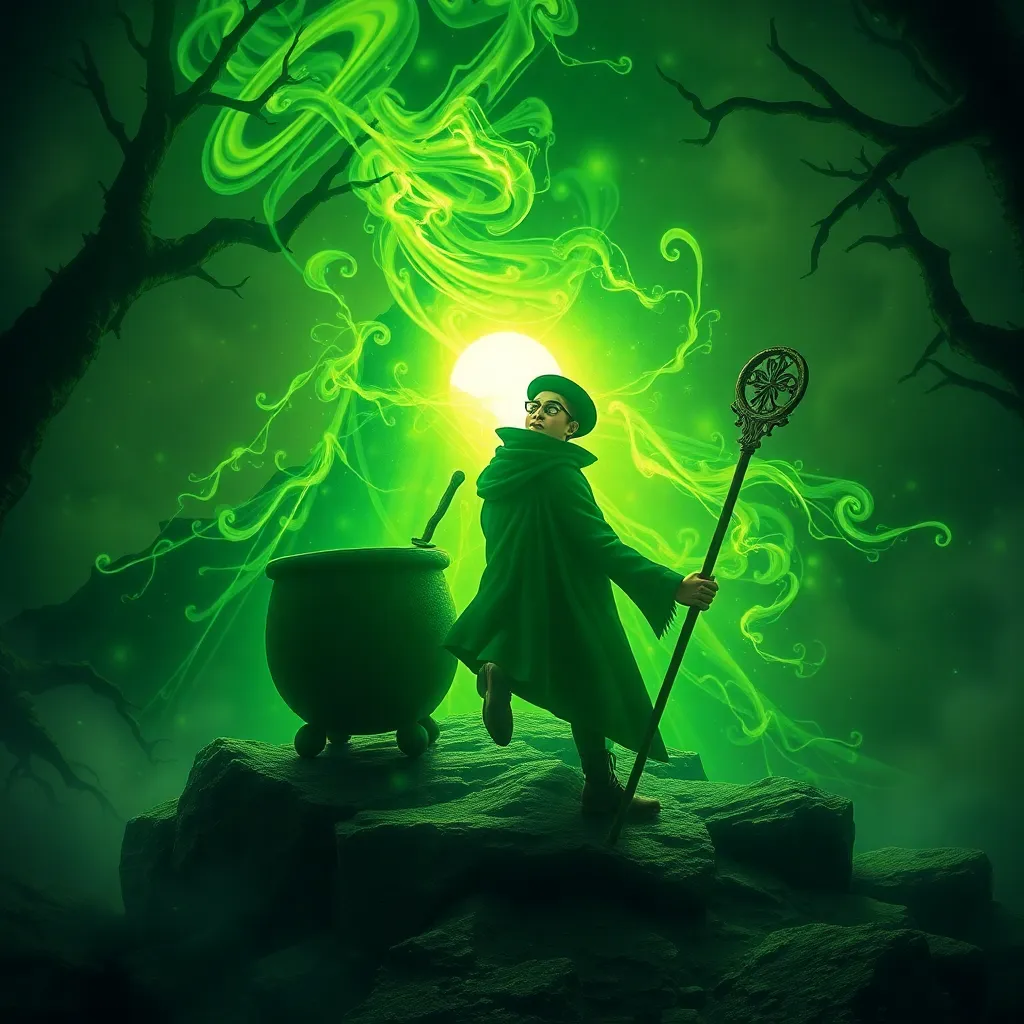Harpy Transformations: From Birds to Women and Back Again
I. Introduction
Harpies, in mythology, are often depicted as winged spirits known for their dual nature as both beautiful women and fearsome birds. Their origins can be traced back to ancient Greek mythology, where they were considered agents of punishment, stealing away individuals or objects as a form of retribution. The harpy’s ability to transform from bird to human and vice versa illustrates a complex interplay of nature, femininity, and power.
This article explores the various aspects of harpy transformations, delving into their historical origins, cultural significance, and evolving representations in literature and art. Understanding these transformations is not only important for appreciating their role in mythology but also for analyzing their impact on contemporary culture.
II. Historical Origins of Harpy Myths
A. Ancient Greek Literature and the Role of Harpies
The earliest references to harpies can be found in ancient Greek texts, particularly in works by Homer and Hesiod. In “The Iliad,” they are described as “the snatchers,” embodying both the winds and the violent nature of storms. Harpies were often portrayed as agents of divine punishment, sent by the gods to enforce justice.
B. Symbolism of Birds in Ancient Cultures
Birds have long held significant symbolic value across various cultures, representing freedom, transcendence, and the connection between the earthly and the divine. In the context of harpies, their avian characteristics symbolize the untamed aspects of nature and the unpredictable forces of fate.
C. Evolution of the Harpy Archetype Through Time
Over the centuries, the archetype of the harpy has transformed significantly. Initially feared and revered, harpies eventually became objects of ridicule or romanticized figures in later literature. This evolution reflects broader societal changes, including shifts in attitudes towards women and nature.
III. The Transformation Process
A. Physical Characteristics of Harpies: Bird and Human Features
Harpies are characterized by their unique combination of avian and human traits. Typically, they possess the body of a woman with the wings and claws of a bird. This duality emphasizes their connection to both the natural world and human society, creating a striking visual embodiment of transformation.
B. Psychological Aspects of Transformation
The transformation of harpies can also be understood psychologically. The ability to shift between forms represents the complex nature of identity and the struggle for power. This duality can symbolize the inner conflict faced by women navigating societal expectations and personal desires.
C. Cultural Significance of Shape-shifting in Mythology
Shape-shifting is a common motif in mythology, often signifying a character’s ability to adapt and survive. In the case of harpies, their transformations serve to highlight themes of vengeance, justice, and the consequences of human actions.
IV. Harpies in Literature and Art
A. Depictions of Harpies in Classical Texts
Classical literature offers numerous depictions of harpies, often portraying them as malevolent creatures. In Virgil’s “Aeneid,” they are described as harbingers of doom, foreshadowing the destruction of the Trojan fleet. These representations emphasize their roles as agents of chaos.
B. Influence on Renaissance Art and Literature
During the Renaissance, harpies were reinterpreted in art and literature, often depicted with an emphasis on their beauty and allure. Artists like Gustave Moreau embraced this duality, showcasing harpies as both captivating and terrifying figures that reflect the complexities of femininity.
C. Modern Interpretations and Representations in Media
In contemporary culture, harpies continue to inspire a variety of representations in movies, video games, and literature. They are often portrayed as fierce warriors or tragic figures, reflecting both the power and struggles of women in modern society.
V. Gender Implications of Harpy Transformations
A. Exploration of Femininity and Power Dynamics
The transformation of harpies highlights important themes related to femininity and power. Their dual nature often embodies the tension between societal expectations of women and their inherent strength. Harpies can be seen as symbols of rebellion against patriarchal norms.
B. The Duality of Beauty and Horror in Harpy Representations
Harpies encapsulate the duality of beauty and horror, often representing the fear of female power. This duality can invoke both admiration and dread, reflecting societal anxieties around women’s autonomy and the consequences of their actions.
C. Feminist Perspectives on Harpy Myths
Feminist interpretations of harpy myths often focus on the empowerment of female figures who defy traditional roles. By reclaiming the narrative of the harpy, modern scholars and artists can challenge stereotypes and explore the complexities of women’s identities.
VI. Harpies in Popular Culture
A. Analysis of Harpies in Contemporary Fantasy and Fiction
In contemporary fantasy literature, harpies are often reimagined as complex characters with agency and depth. Works like “Percy Jackson” and various fantasy series depict them not just as monsters but as beings with rich backgrounds and motivations.
B. The Role of Harpies in Video Games and Movies
Video games and movies have also embraced the harpy archetype, frequently portraying them as formidable adversaries or allies. Titles such as “Final Fantasy” and “Clash of the Titans” illustrate the versatility of harpies in modern storytelling.
C. Reception and Adaptation of Harpy Lore in Modern Storytelling
The adaptation of harpy lore in modern storytelling reflects ongoing cultural shifts. As society grapples with issues of gender, power, and identity, harpies serve as a compelling lens through which these themes can be explored.
VII. Symbolic Meanings Behind Harpy Transformations
A. Harpies as Metaphors for Transformation and Change
Harpies symbolize the potential for transformation and change, embodying the idea that change is often accompanied by chaos and uncertainty. Their ability to shift forms reflects the fluidity of identity and the complexities of personal growth.
B. Environmental and Ecological Interpretations of Harpy Myths
In contemporary interpretations, harpy myths can also be viewed through an ecological lens. The harpy’s connection to nature and the environment raises questions about humanity’s relationship with the natural world and the consequences of ecological destruction.
C. The Role of Harpies in Reflecting Societal Values and Fears
Harpies serve as reflections of societal values and fears, particularly regarding gender roles, power dynamics, and the consequences of transgression. Their enduring presence in mythology underscores the importance of understanding these cultural narratives.
VIII. Conclusion
In summary, the transformations of harpies from birds to women and back again encapsulate a rich tapestry of cultural significance, historical evolution, and psychological depth. From their origins in ancient Greek mythology to their modern interpretations in literature and media, harpies continue to captivate and intrigue.
The enduring legacy of harpy transformations in culture speaks to the complexities of identity, power, and societal values. As we look to the future, continued exploration of harpy myths will reveal even more about their significance and the themes they represent in our ever-changing world.



